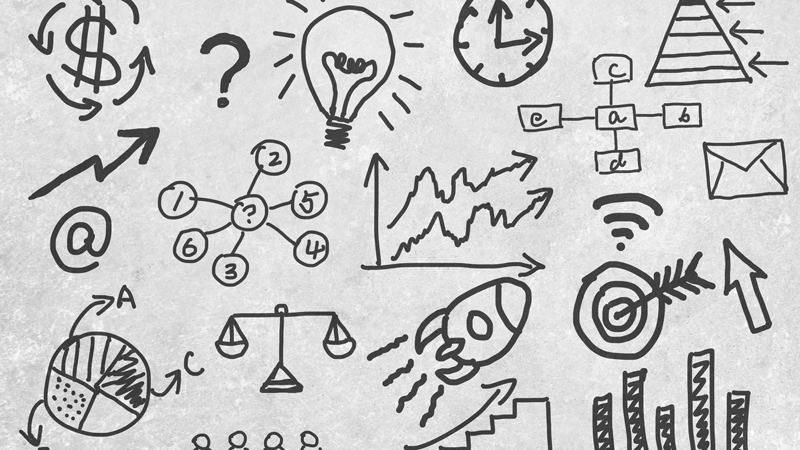
Contributors: Jon Terry, Susan Gibson, Siraj Sirajuddin
We recently hosted a webinar titled, “How to Identify Your Value Streams” with Jon Terry from Planview and Siraj Sirajuddin and Susan Gibson from Temenos+Agility. During the webinar, we shared the importance of identifying value streams and how to do so in a responsible and virtual manner.
Throughout the webinar, we received a lot of great questions from the audience that we answered live. Below you’ll find a summary of the questions and answers to help you begin to identify your value streams.
Question: How do we engage external stakeholders to understand how they perceive the flow of value they could receive?
The answer to this question may depend on what is meant by external stakeholders. If this is a question of the IT organization wanting to engage more closely with their stakeholders in “the business” then the SAFe® model fundamentally doesn’t work unless and until you not only engage, but effectively align technology teams with business decision makers. The premise of SAFe® is that the efforts of stable technology teams are driven by continuous engagement with aligned business partners through Program Increment (PI) Planning.
If the question is more about truly external stakeholders, i.e. the people outside your company who buy your products and services then it’s a different story. In that case, engaging key potential buyers can be useful but not so much to ask them what they want. That rarely results in a coherent product offering. Instead, you want to primarily engage with customers and prospects to understand their context and problems. And then use your flow of product development as a series of experiments to discover how you can best solve those problems. Drive your decision making mostly on what people actually use and demonstrate a willingness to pay for – not what they say they want.
Question: Does value always need to relate to money?
Value can definitely manifest in ways other than money. A government agency or non-profit may measure things related to citizen satisfaction, community risk avoided, children educated, lives saved, etc. You could potentially connect some of those to money, but, in other cases, we have social purposes that fly in the face of simple economic logic.
Even in cases of for-profit companies, it may make sense to identify categories of value that aren’t directly financial: employee satisfaction, employee retention, goals related to social purposes like the environment, etc. Again, you might well be able to connect these to financial numbers. Employee satisfaction is related to productivity which makes money. Improving retention reduces the need for recruiting, onboarding, training, etc., which ultimately saves money. But the connection may be hard to draw explicitly, and it may make more sense to focus on these indirect goals.
Question: What are the prime data sources we should consult for designing a questionnaire for value stream mapping implementation: barriers, benefits, critical success factors?
Value stream mapping isn’t generally conducted via questionnaires but rather by workshops. It’s an active conversational process. Having said that, you do need to gather some data in advance: existing org structures, existing P&L structures for outward facing products, a catalog of applications that support IT assets and/or customer facing solutions, patterns of persistent spend in your past portfolio management data, patterns of persistent activity in your development and IT operations ticketing systems, etc. All of these are fundamentally about seeing how you make your money vs how you currently spend your time and money.
Question: How many operational value streams would you expect a typical organization to have?
Depending on how you look at it, any organization has many value streams. The real question is how to segment the organization into a usefully small number of value streams that can be treated as relatively separate from one another and funded and managed accordingly.
One way to think about it is to work backwards from the number of people you have working in your technology departments – since that’s usually where a scaled Agile implementation starts. We identify our operational value streams so that we can best organize our development value streams, i.e. our Agile Release Trains (ARTs).
An ART is meant to have between 50 and 125 people. A 125 person ART is pretty big. So, let’s aim for between 50 and 100. Call the midpoint 75. Divide your total technologist headcount by 75. That’s perhaps roughly how many ARTs you’ll have. Not exactly. Some will be bigger. Some smaller. But you’ve got a rough guide.
Recall that in our webinar slides we showed that in some cases one ART may support multiple small (related) value streams, others may be one-to-one, and still other very large products or value streams might require the work of multiple ARTs.
Another way to think of that is in some cases a group of business stakeholders who works in related areas will share the capacity of a release train. In other cases, it will be one for one. A single major business leader will be the sponsor for a large group of technology people who all work in his/her area of the business. And in others, which should be obvious, you’ve got a major strategic capability with a very senior sponsor whose business unit merits a whole lot of capacity.
Question: What is the difference between a system value stream and a development value stream?
Systems are the actual applications, technology assets, websites, mobile apps, things people log into and use with keyboards (in the case of IT type stuff). The development value streams are the people who work on those systems. They design, build, test, deploy, operate, fix, etc., for outward facing systems even market, sell, and implement.
Question: What is the difference between products and services value streams?
In terms of how we organize and invest in them, we shouldn’t think of these as different at all. If a company makes physical things that customers buy and use without much relationship with the company, i.e. they buy them off Amazon as a commodity, then you could think in terms of “just” products.
But many things that we call products really provide their value, not only from the product itself, but also from the people who market, sell, implement, and support the product. You can see this in evolution of software from being something we buy on a disk and install on our own computers to something we use online, software-as-a-service. You can also see it in other industries as different as aircraft engines and medical devices where we get a significant amount of value from our relationship with the vendor well beyond the physical device. The physical product may even be upgradable, so it evolves to gain value through new physical components or software upgrades. The product is a platform through which the manufacturer provides a service.
What next?
Your best next step is to set up a workshop to help identify your value streams. If you have an in-house SAFe® coach or consultant, see if that person is willing to build and facilitate this workshop with you. If you don’t have a third-party, unbiased person to help with this, you may want to consider reaching out to Susan and Siraj directly, as they can help facilitate this process. Identifying your value streams doesn’t have to be done in-person; it can very easily and effectively be done virtually.
Added Value
Through our partnership with Temenos+Agility, Planview customers receive a discount for SAFe® training and certification. Visit their training calendar and reach out to your Planview Account Executive for your discount code.
As part of our broader partner program, we offer Planview AgilePlace licenses at no cost to Agile coaches and consultants. Reach out directly to Jon for more information (jterry@planview.com).





